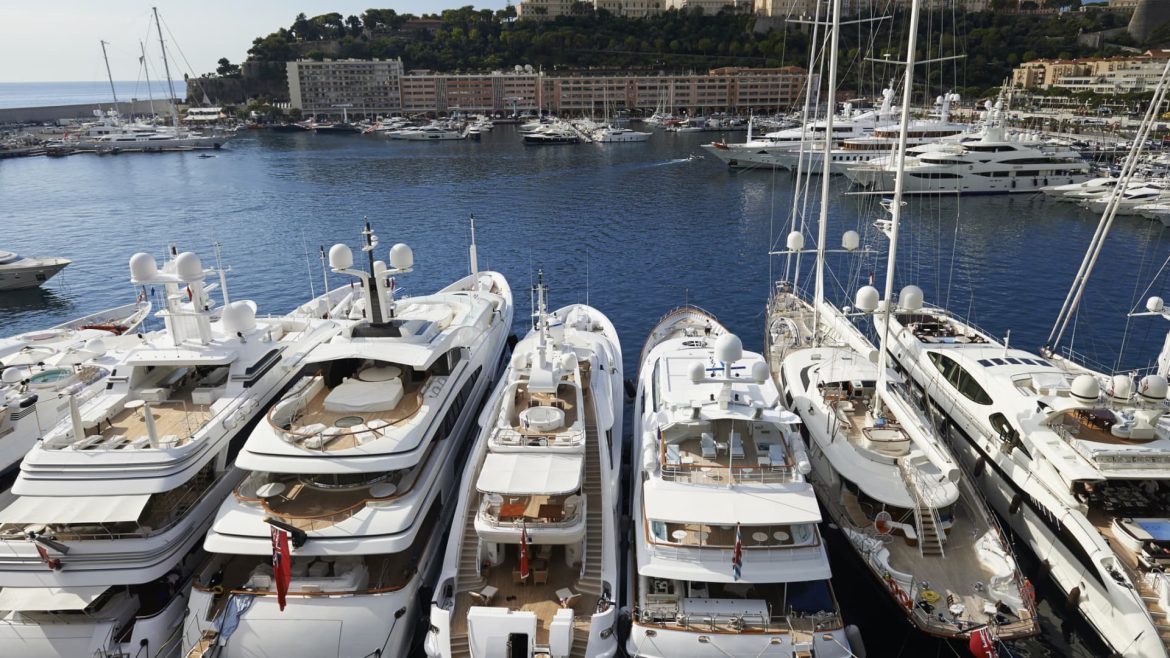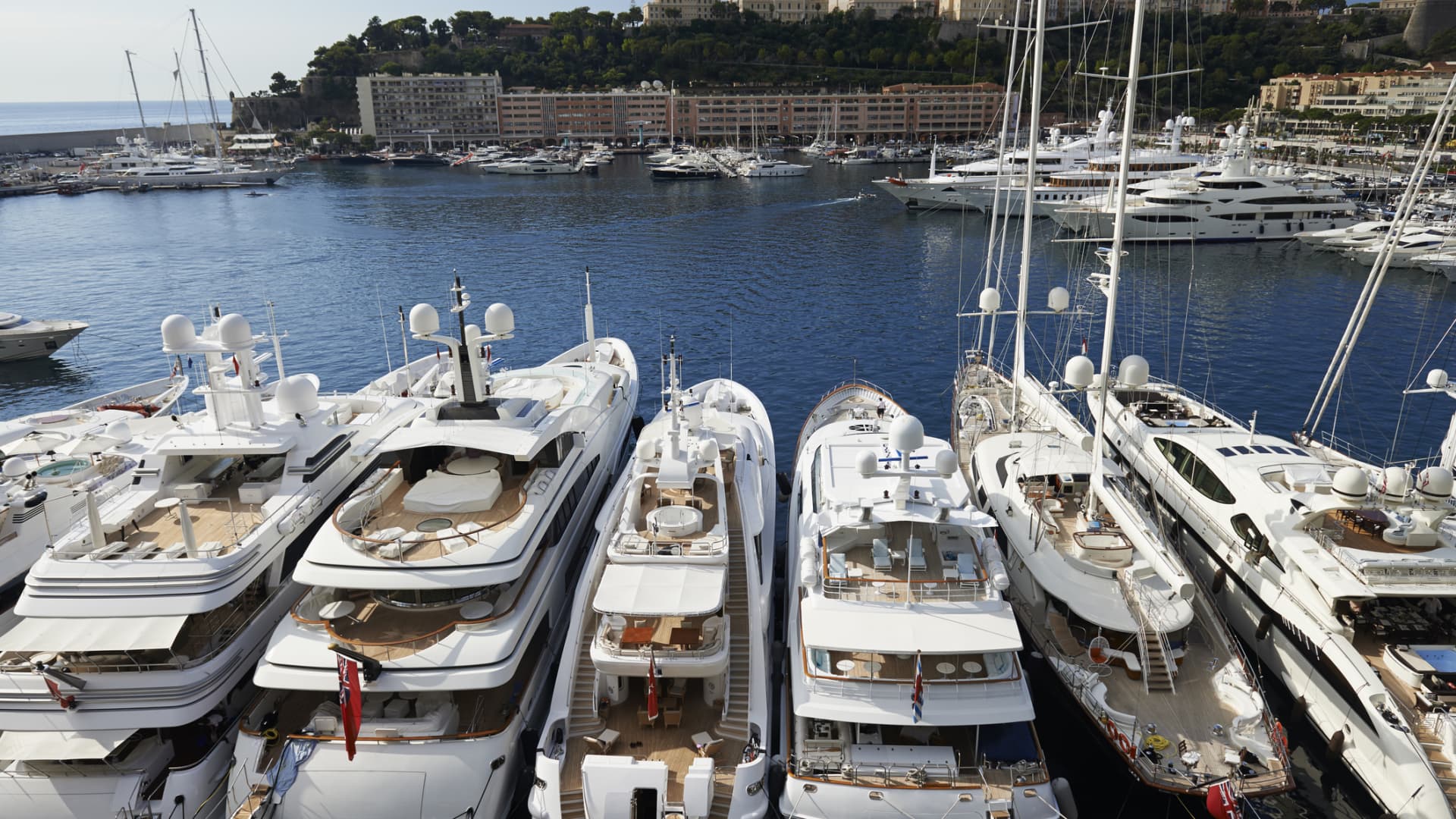The Tempestuous Seas of Trade: Analyzing the Impact of the 2025 “Trump Tariffs” on the Yacht Industry
A Luxury Market Adrift
The global yacht industry, long considered a bastion of luxury and exclusivity, found itself in uncharted waters in 2025. The reintroduction of protectionist trade policies under the Trump administration sent shockwaves through the sector, disrupting established supply chains and forcing stakeholders to adapt to a new reality. The “Trump Tariffs,” as they came to be known, imposed significant duties on imported luxury goods, including yachts, with the stated aim of protecting domestic industries and reducing trade deficits. However, the impact of these policies was far more nuanced and complex than anticipated, revealing deep interdependencies within the global yacht market.
The Genesis of the Storm: Trump’s Trade Agenda
The 2025 tariffs were not an isolated event but rather a continuation of the Trump administration’s broader trade agenda. The policies were framed as a means to revitalize American manufacturing, create jobs, and address perceived trade imbalances. However, the yacht industry, with its heavy reliance on imported vessels and components, was particularly vulnerable to these measures. The tariffs, which targeted European shipyards—longtime leaders in the luxury yacht market—were intended to incentivize domestic production. Yet, the U.S. yacht-building industry, while capable, lacked the scale and specialization to immediately fill the gap left by European imports.
European Shipyards Under Fire: A Uneven Impact
The immediate fallout from the tariffs was most acutely felt in Europe, where shipyards specializing in luxury yachts faced unprecedented challenges. The tariffs, which reportedly reached as high as 20% on EU exports, created a significant price disadvantage for European builders in the U.S. market. However, the impact was not uniform across the continent.
Hallberg-Rassy’s Hardship
Swedish shipyard Hallberg-Rassy, known for its high-quality sailing yachts, was among the hardest hit. The company reported a sharp decline in U.S. orders, leading to substantial workforce reductions. Approximately one-third of the shipyard’s employees were laid off, a stark illustration of the tariffs’ human cost. The company’s struggles highlighted the vulnerability of smaller, specialized shipyards that lacked the financial cushion to absorb the sudden increase in costs.
German Shipyards Weathering the Gale
In contrast, German shipyards appeared to fare better, suggesting that the impact of the tariffs varied depending on the type of yachts produced and the markets served. German builders, known for their engineering prowess and innovation, may have been better positioned to adapt to the new trade environment. Some speculated that the difference in impact could be attributed to the types of yachts produced—German shipyards may have focused more on motor yachts, which have a different market dynamic compared to sailing yachts.
Exploiting Loopholes
Amid the turmoil, some companies found ways to mitigate the impact of the tariffs by exploiting existing loopholes in international trade regulations. For example, some shipyards restructured their supply chains to minimize the tariffs’ effect, while others explored alternative markets to offset the loss of U.S. sales. The ability to navigate these complexities became a critical factor in determining a shipyard’s resilience.
Navigating the Tariffs: Strategies of the Wealthy Elite
Faced with higher prices, wealthy yacht buyers sought creative strategies to mitigate the impact of the tariffs. The luxury yacht market, long accustomed to catering to the whims of the ultra-wealthy, proved remarkably adaptable in the face of adversity.
Offshore Registration
One of the most popular tactics was offshore registration. Buyers registered their yachts in countries with favorable tax and regulatory environments, then imported them into the U.S. This approach effectively circumvented the tariffs, allowing buyers to acquire their desired vessels without incurring the additional costs. The practice highlighted the global nature of the yacht industry and the willingness of buyers to exploit legal loopholes to achieve their goals.
Shifting Demand
Some buyers shifted their demand toward domestically produced yachts, although the U.S. yacht-building industry faced challenges in meeting the demand for ultra-luxury vessels. While American shipyards have a strong reputation for quality, they often lack the scale and specialization of their European counterparts. This shift in demand created opportunities for domestic builders but also exposed the limitations of the U.S. industry in the luxury segment.
Embracing the Pre-Owned Market
Another alternative was to explore the pre-owned yacht market, where tariffs did not apply. This led to a surge in demand for used yachts, affecting the pricing dynamics of that segment. The pre-owned market, long considered a secondary option, suddenly became a viable alternative for buyers seeking to avoid the tariffs. This shift had ripple effects throughout the industry, as brokers and dealers adjusted to the new demand patterns.
Beyond Economics: Immigration Issues and Industry Turmoil
The tariffs were not the only challenge facing the U.S. yacht industry. Tighter immigration policies also contributed to the turmoil. The industry relies heavily on foreign crew members, and stricter immigration rules made it more difficult and expensive to staff yachts. This combination of high tariffs and immigration restrictions created a perfect storm, impacting not only yacht sales but also the related service and maintenance sectors.
The reliance on foreign crew members is a longstanding tradition in the yacht industry, with many captains and crew hailing from countries like the Philippines, Indonesia, and Eastern Europe. The Trump administration’s immigration policies, which included stricter visa requirements and increased scrutiny of foreign workers, made it more difficult for yacht owners to assemble their crews. This, in turn, diminished the allure of yacht ownership for many, as the logistical and financial burdens of staffing a vessel increased.
China’s Emerging Role: A Potential Paradigm Shift
While the U.S. and Europe grappled with trade tensions, China’s yacht market presented both opportunities and challenges. The Chinese market, while still relatively nascent compared to the U.S. and Europe, has been growing steadily. The country’s increasing wealth and interest in leisure activities positioned it as a potential growth market for the yacht industry. However, the Chinese market has unique characteristics, with a preference for yachts used for entertainment and leisure, which presents distinct opportunities.
Chinese shipyards, while not yet on par with their European counterparts in terms of quality and innovation, have been making strides in recent years. The potential for China to emerge as a significant player in the global yacht market cannot be overlooked. Whether Chinese shipyards could rise to prominence and challenge the dominance of European builders remained to be seen, but the possibility added another layer of complexity to the industry’s future.
The Ripple Effect: Impact on Related Industries
The impact of the tariffs extended beyond shipyards and yacht buyers, affecting a wide range of related industries. The interconnected nature of the yacht market meant that disruptions in one area had cascading effects throughout the supply chain.
Marine Equipment Suppliers
Companies supplying equipment and components to shipyards experienced fluctuations in demand, depending on the success of their clients in navigating the tariff landscape. Some suppliers reported a decline in orders as shipyards scaled back production, while others found new opportunities in the pre-owned market or alternative markets.
Yacht Brokers and Dealerships
Yacht brokers and dealerships faced uncertainty as they had to adjust to changing prices and navigate the complexities of international trade regulations. The shift in demand toward pre-owned yachts created new challenges for brokers, who had to adapt to the evolving market dynamics. The uncertainty also made it more difficult for dealerships to forecast sales and manage inventory, adding to the industry’s turmoil.
Service and Maintenance Providers
The decline in yacht sales and increased costs associated with foreign crew members impacted the demand for yacht maintenance and repair services. Service providers, which rely on a steady stream of business from yacht owners, faced financial challenges as the number of active yachts declined. This, in turn, affected the broader marine industry, as service providers cut back on their own operations in response to the reduced demand.
Tourism and Hospitality
Regions that rely on yachting tourism experienced a decline in revenue as fewer yachts visited their shores. The yachting industry is a significant contributor to the tourism and hospitality sectors in many coastal regions, particularly in the Mediterranean, the Caribbean, and parts of the U.S. The reduction in yacht traffic had a ripple effect on local economies, affecting everything from marinas and restaurants to hotels and tour operators.
A Temporary Reprieve?: The 90-Day Pause
On April 10, 2025, the Trump administration announced a 90-day suspension on the implementation of most newly proposed tariffs. This provided a temporary reprieve for the industry, allowing businesses to reassess their strategies and hope for a more permanent resolution. However, the uncertainty remained, as the possibility of tariffs being reinstated loomed large. The pause offered a window of opportunity for negotiation and compromise, but whether that opportunity would be seized remained uncertain.
The 90-day pause was seen as a positive development by many in the industry, as it provided a temporary respite from the immediate financial pressures caused by the tariffs. However, the uncertainty about the future of the tariffs created a sense of limbo, making it difficult for businesses to plan for the long term. The pause also highlighted the political nature of the tariffs, as the administration sought to balance its protectionist agenda with the economic realities of the yacht industry.
Conclusion: Charting a Course Through Uncertainty
The 2025 “Trump Tariffs” on imported yachts have created a complex and challenging environment for the global yacht industry. While the stated goals of protecting domestic industries and reducing trade deficits may have some merit, the reality is that these policies have disrupted established trade patterns, created uncertainty, and impacted a wide range of businesses and individuals. The strategies employed by wealthy yacht buyers to avoid the tariffs, the uneven impact on European shipyards, and the potential rise of China as a yachting market all point to a significant shift in the industry’s landscape.
Ultimately, the long-term consequences of these tariffs will depend on a multitude of factors, including future trade negotiations, the adaptability of industry players, and the evolving preferences of wealthy consumers. The yacht industry finds itself navigating turbulent waters, requiring careful planning, strategic alliances, and a willingness to adapt to the ever-changing tides of global trade. As the industry charts its course through these uncertain times, one thing is clear: the luxury yacht market will never be the same. The lessons learned from the 2025 tariffs will shape the industry’s future, forcing stakeholders to rethink their strategies and embrace a new era of global trade.





